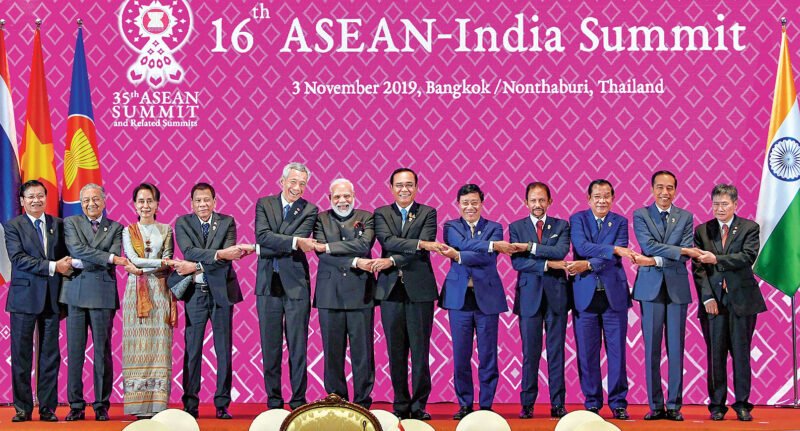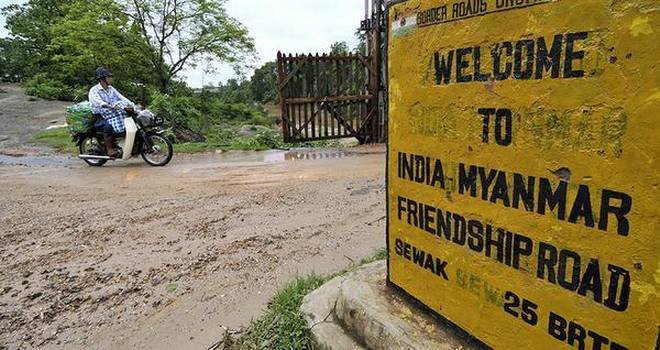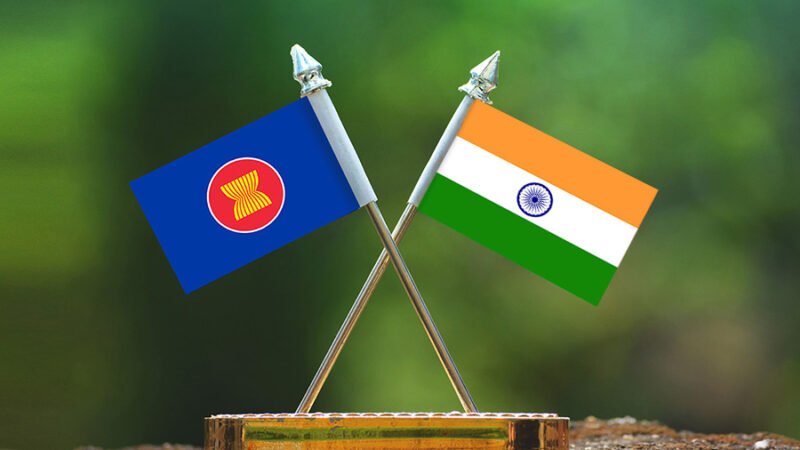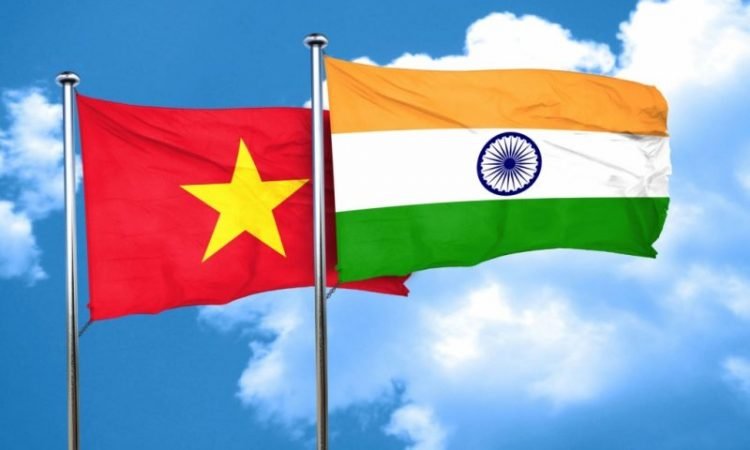India’s current attention on its extended neighbourhood and possibilities associated with the ‘Act East Policy’

Since India’s independence in 1947, India’s first Prime Minister, Jawaharlal Nehru, has endeavoured to highlight the need of building strong connections with their neighbours and all those nations that had just gained freedom. Prime Minister Nehru’s objective was to bring the Pan-Asian republics together and to accomplish it via the NAM (Non-Aligned Movement). However, Nehru’s plan was never implemented in the manner that he desired, while several nations in the South Asian area such as Thailand, Pakistan and the Philippines joined the US-led SEATO (Southeast Asian Treaty Organization) to halt the spread of communism in the region. With the fall of the Soviet Union, the Asia area faced new problems. The end of the Cold War in 1991 caused a significant shift in most ASEAN nations’ economic and strategic goals, and all nations had to adapt to the region’s evolving economic and security situation, of which India was no exception. Since the end of the Cold War and the collapse of the Soviet Union, India has faced numerous challenges, since 1991, India’s first task has been to pursue a more diverse foreign policy and establish connections with the United States. India’s partnership with the United States grew significantly, and in 2008, both countries signed a landmark civil nuclear cooperation pact to initiate diplomatic goals and to promote economic, strategic, and cultural relations with the Asia-Pacific regions at various levels, with the goal of developing political, economic, and security cooperation with countries in Southeast Asia through the Look East Strategy, which was the brainchild of the former India Prime Minister Narsimha Rao. The strategy was maintained even after Prime Minister Narsimha Rao left office. The policy was effectively handed down and executed by leaders such as Atal Bihari Vajpayee and Dr Manmohan Singh. Since its inception, the LEP (Look East Policy) has had four objectives:

1. Regional Economic Integration – The fundamental goal of the LEP (Look East Policy) was economic integration with East and Southeast Asia. India knew early on that all of its East Asian neighbours were experiencing fast development while it was trailing behind in terms of reaching the planned growth. India recognised that it needed to strengthen connections with high-performing economic nations, so it took a three-pronged strategy to establish regional cooperation such as -:
India recognised that it needed to strengthen connections with high-performing economic nations, so it took a three-pronged strategy to establish regional cooperation such as -:
- They were to re-establish political ties with ASEAN member countries.
- To boost commerce, investment, technology, and tourism.
- To promote political understanding by increasing defence relations with nations
2. Reform and Liberalization – The programme intended to foster stronger economic integration with East and Southeast Asian nations by decreasing trade barriers and liberalising the investment system with the support of the LEP. Since 2003, India, ASEAN, and numerous individual ASEAN countries have signed the Comprehensive Economic
Cooperation agreements. India has also inked treaties with Thailand and Singapore, while the ASEAN-India Free Trade Agreement was signed in 2009 with 10 ASEAN states.
3. Rapid Economic Growth – With the assistance of the LEA, India began to prioritise East and Southeast Asia in foreign policy planning. Tapping East Asia’s development was a crucial reason for India’s involvement with East Asian nations; strong economic links with East Asia would also aid in positioning India for accessing growth possibilities; and with the Look East Policy, India holds a key to India’s sustained economic progress.
4. North-East India Development – Since their independence, the Northeastern nations have fallen behind in economic growth, resulting in regional discontent. The LEP (Look East Policy) may assist India by connecting the Northeastern area with Southeast Asia. Because India regards the North-eastern region as a gateway to the East, the Look East Policy can be the region’s new development motto.
Although the plan was implemented to transition India from a state-controlled to a liberalised economic framework, the country needed many years to adjust to the new economic reality, to fasten things it was India’s 14th Prime Minister Narendra Modi who launched the Act East Policy which was the LEP (Look East Policy’s) successor, in 2014 the AEP (Act East Policy). The ‘Act East’ policy was a diplomatic effort to create diplomatic, economic, geopolitical, and cultural ties with the Asia-Pacific region on several fronts. The Act East and the Look East are not diametrically opposed; rather, they are two sides of the same coin representing separate but ongoing stages in Asia’s Pacific growth.

Significance
The Economic Aspect of AEP (Act East Policy) placed a considerably larger emphasis on defence cooperation than the Look East Policy. The development of India’s North-Eastern Region was also more focused during the Act East Policy.
The North Eastern Region was also given priority under the Look East Policy, although the efforts were minor in comparison to the Act East Policy.
The Act East had a more strategic notion than the Look East under the
Geopolitical Aspect. India had formal relations not only with countries in South East Asia, but also with countries such as Japan and South Korea, which funded these projects, and the Act East was
comparatively benevolent for India, as there has been a greater emphasis on dialogues such as QUAD (Quadrilateral Security Dialogue) with countries such as Australia, Japan, and the United States. Relationships were formed with the support of the Act East with nations such as the Philippines, Malaysia, and Vietnam to counter China’s influence.
Achievements
- As a result of the Act East Policy, India–ASEAN ties have developed and achieved new heights, with many Southeast Asian nations supporting India’s increased engagement in opposing China’s growth. India is now ASEAN’s fourth-largest economic partner. India has also promised $1 billion to improve connectivity. Many road and bridge projects, as well as hydroelectric projects, have been conducted under the Act East India-Japan Act forum.
- The development of the North East has become the key goal of the Act East Policy, with the Japanese government committing to spend a massive Rs 13,000 crore in several current projects and many new projects that have been announced. The Act East India-Japan Forum was established in 2017 with the goal of providing a platform for India-Japan collaboration.
The Forum will assist in identifying specific projects for economic modernization of India’s North-East region, such as those pertaining to development, industrial linkages, and connectivity development.
- India has inked Memorandums of Understanding (MOUs) with nations such as Vietnam to purchase defence equipment on credit from India. Since 2015, India has undertaken many maritime law enforcement, patrol, and training exercises.

Challenges:
- There has been an increase in Chinese expansion as China’s influence has coincided with both rising tensions between India and China, as well as a rise in Chinese presence in the region. Furthermore, the civic society is pleased with how China managed the epidemic and gave assistance in the area. Furthermore, the Galwan Valley war has strained relations between China and India.
- The area has been disappointed by India’s economic policy. The accords negotiated between India and East Asian nations are rather frightening. India has only signed one Memorandum of Understanding on oceans and fisheries with South Korea. It is the only nation that has withdrawn from the recently concluded Regional Comprehensive Economic Partnership (RCEP).
- There is a growing concern in the area over India’s treatment of its minorities, particularly the Muslim and Christian communities. Many nations, including Indonesia, Malaysia, and Singapore, have expressed worry over India’s expanding Hindu majoritarianism, despite India’s use of soft power via “Buddhist diplomacy,” which has not helped India deal with the region’s developing interreligious conflicts.
Conclusion
The Indian government must keep the pledges stated in the 2018 Delhi Declaration. This comprises efforts involving digital connectivity in Cambodia, Laos, the People’s Democratic Republic of Myanmar, and Vietnam. Agreement on Trilateral Highways and Agreement on Trilateral Motor Vehicles (MVA). India’s Act East strategy, as well as the repercussions of its weak macroeconomic stability and political sectarianism, must be evaluated.
References
- https://www.jkpi.org/comparing-indias-look-east-and-act-east-policies/
- https://blog.forumias.com/indias-act-east-policy-issues-and-challenges/
- https://www.jstor.org/stable/pdf/26466920.pdf?refreqid=excelsior%3A199ee12 3a868c9f836c
- 10c86c3691005&ab_segments=&origin=&acceptTC=1 https://www.jstor.org/stable/pdf/26466920.pdf?refreqid=excelsior%3A199ee12 3a868c9f836c
- 10c86c3691005&ab_segments=&origin=&acceptTC=1 https://www.orfonline.org/expert-speak/neighbourhood-first-policy-in-the-
- changing-regionalgeopolitics-55887/



















